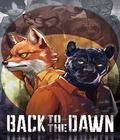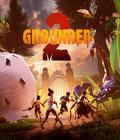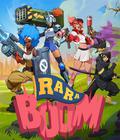Released in 2020 on Early Access, Grounded quickly became a hit among players. The survival mechanics were solid without going so deep that it scared away casual fans of the genre. The multiplayer gameplay was robust without sacrificing a good single-player experience. The development team perfected the feeling of being shrunken down to a size where once-insignificant bugs are a major threat and pebbles are building blocks for crafting. The game grew wildly in scope, and the quality never declined; the last major feature patch was released in spring of 2024. The announcement of Grounded 2 was a surprise, since it still felt like the original Grounded was new. We checked out the latest build before the game hits Steam Early Access.
The story takes place a few years after the events of the first Grounded game's good ending. The Ominent Corporation has seemingly turned over a new leaf as it strives to be transparent about all of its experiments, and it vows to not kidnap people in the process. It also purchased the local Brookhollow Park to tend to the place and plans to place a statue commemorating the adventures of the four teenagers who were shrunken down for science — and survived. During the statue ceremony, the scientist who was commemorating the event went off the rails and decapitated the robot BURG.L before causing an explosion in the park. As the commotion settles, you find yourself once again playing as one of the four teenagers from the previous game, and again, you've been shrunken down, but this time you wake up in a lab rather than a briefcase. Aside from finding a way back to your original size, your goal is to uncover the mystery of why BURG.L was almost destroyed and what's going on with Ominent's continued exploration of the miniature world.
For the most part, the gameplay mechanics feel relatively unchanged from the first title, and that's a positive thing. The basic survival elements are present, such as resource gathering and tool crafting on the fly. More complex crafting needs a workbench for construction. Getting recipes still requires you to analyze a bunch of ingredients, while the science points earned give you more upgrades. Stamina is a thing but replenishes rather quickly, while hunger and thirst are the only real constantly depleting stats. It's a fairly light survival experience compared to the game's contemporaries, and four-player multiplayer makes the game feel more accommodating for those who aren't ready for the hardcore grind of a typical survival game.
While the overall gameplay systems feel very similar to what was introduced in the previous game, there is one thing that has been streamlined: the tools that you create. You still need to gather the necessary ingredients to craft things like an ax and shovel, but now they're all covered by an omnitool, which as the name suggests, is a multifunctional device that frees up some slots that would otherwise be occupied by individual tools. Aside from giving you more space, the omnitool also lets you switch functions automatically, so there's no need to switch tools when you want to chop down a dandelion or do some digging.
There are two other main gameplay changes that make this sequel a little more evolved over the first game, even in this early iteration. The first is the vastness of the world itself. The park is a vastly bigger space than the backyard, and the game tries to convey this with the presence of different biomes, such as a more frigid land due to the presence of an overturned freezer. There are also many more labs present to provide a better sense of the vastness of an environment. The original backyard felt large due to your size, but having more area to cover in this game can only be seen as a good thing.
The second gameplay change is the addition of friendly functional bugs. The first game had bugs that roamed around and posed no threat until aggravated, but the most you could do is turn some of the bugs into pets that served no function. That changes in the sequel, as you can get bugs that can do things from basic resource gathering to acting as your steed for battle and travel. The latter is really useful in the game's more expanded world. Being able to travel via any means other than on foot is awesome, but it's the menial tasks that change up the game. It means that you can get a facsimile of multiplayer play when playing solo and some extra hands when playing online multiplayer. This feature alone is big enough to make the sequel feel worthwhile.
The game is still in its early stages, so it's understandable that the performance needs some tuning. On high-end hardware, the experience is quite pleasant, as you can turn up everything to the highest levels and experience a solid frame rate most of the time. However, the game will occasionally experience hitching for no apparent reason. This manifests in around a pause that lasts for a couple of seconds on Windows but longer on Linux. The game simply resumes after the pause instead of having the game logic continue and see you get hurt or skip anything important. Perhaps it's too early for the game to be optimized, but players should be aware of this, in case they're expecting the smoothness of the first game in the Early Access build.
As it stands now, Grounded 2 feels like a natural continuation of the first title's base iteration. Even in its incomplete state, the story has enough to keep things intriguing. The gameplay keeps all of the good stuff from the original while streamlining a few things to tighten up the experience. The bigger playfield is always welcome, even though the original game already felt expansive. The addition of friendly bugs that can serve as transportation adds a good deal to the experience. Even though we expect the game to be in Early Access for quite some time, Obsidian's track record makes us feel confident that Grounded 2 is a future hit that's worth investing in now.
More articles about Grounded 2






















